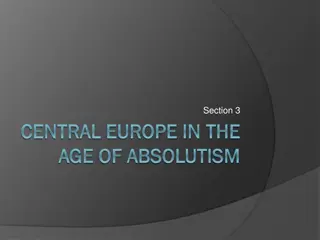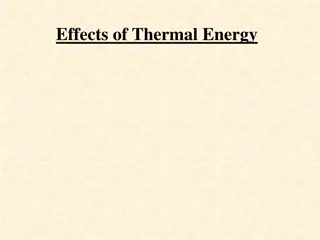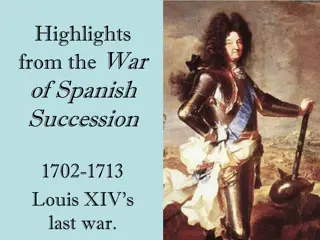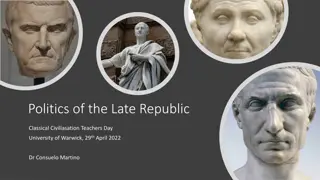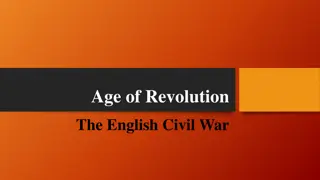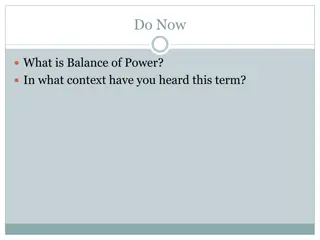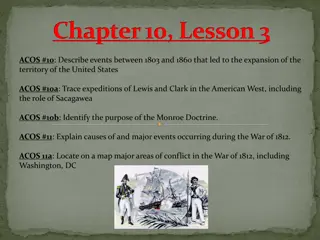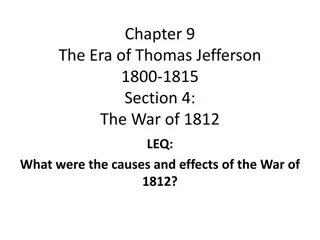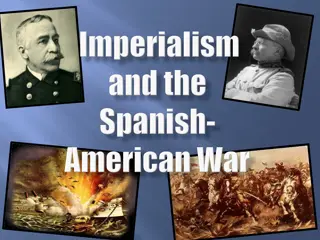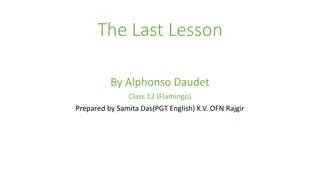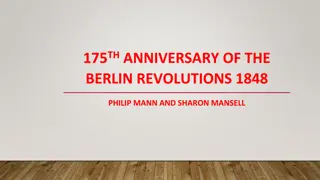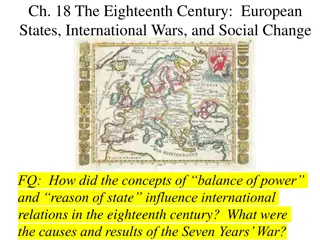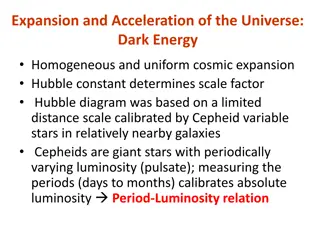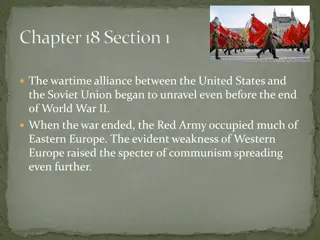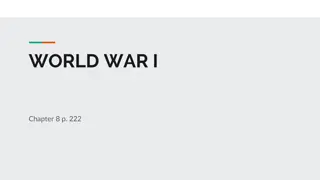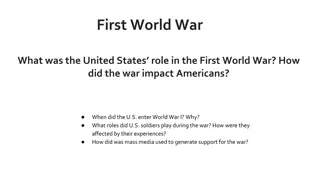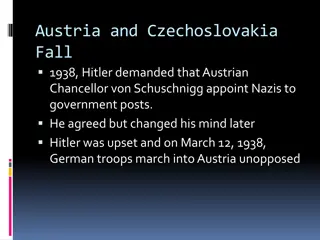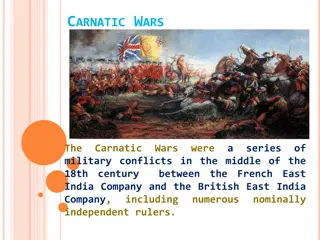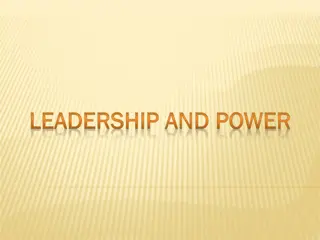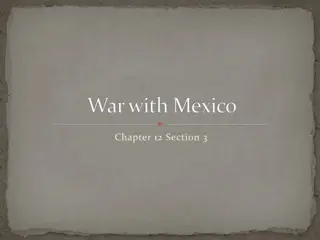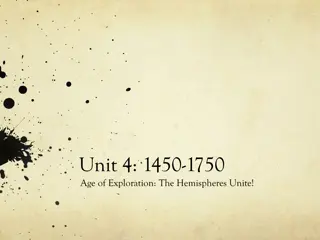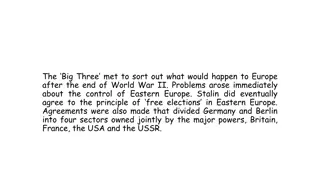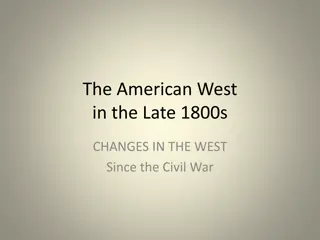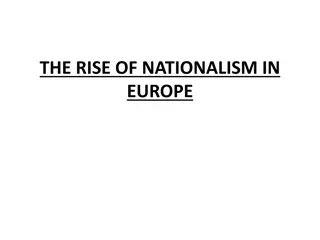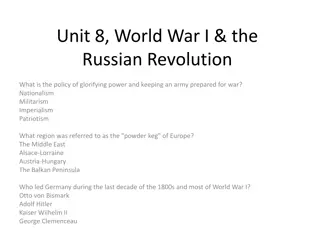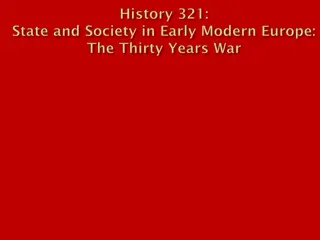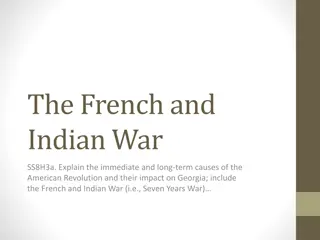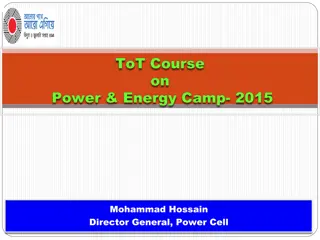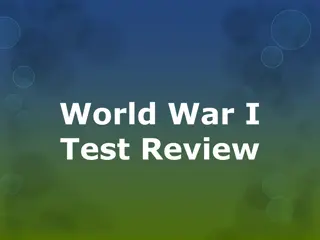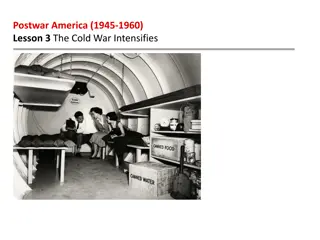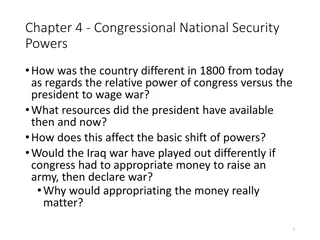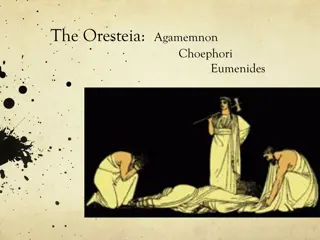Rise of Hapsburgs and Prussia in Europe: War, Expansion, and Power Struggles
Series of conflicts including the Thirty Years War shaped the rise of Hapsburg Austria and emerging Prussia in Europe. The Hapsburg Empire expanded under Maria Theresa's reign, while Prussia developed efficient bureaucracy and a formidable military. Frederick William I and Frederick II played key roles in Prussia's growth, challenging the power balance in the region through wars and strategic moves.
Download Presentation

Please find below an Image/Link to download the presentation.
The content on the website is provided AS IS for your information and personal use only. It may not be sold, licensed, or shared on other websites without obtaining consent from the author. Download presentation by click this link. If you encounter any issues during the download, it is possible that the publisher has removed the file from their server.
E N D
Presentation Transcript
AUSTRIA, PRUSSIA, AND RUSSIA
I. THIRTY YEARS WAR Series of wars that began in Bohemia (Czech Republic) Fights were between Protestants and Catholics led by Ferdinand the Holy Roman Emperor Became more about political gains than religious ones
Mercenaries burned villages, destroyed crops, and killed whoever crossed their paths The Thirty Years War led to a severe depopulation (approximately 1/3 of the people in the German states died) Outcome: France gained territory in Spain & Germany Hapsburg Empire had to accept the independence of all the German princes (360 separate states) Netherlands and Switzerland became independent
2. HAPSBURG AUSTRIA EXPANDS After the war, the Hapsburgs kept the title Holy Roman Emperor By the 1700s, the Hapsburg Empire included Germans, Magyars, Slavs, and other small peoples They each had their own language, laws, and customs Still remained a Catholic state
When Emperor Charles VI died, he had no male heir His daughter, Maria Theresa, became the Empress She won the support of most of her people and strengthened Hapsburg power Reorganized the bureaucracy Improved tax collection Forced nobles and clergy to pay taxes Eased taxes and labor services on peasants
3. EMERGING PRUSSIA German-speaking Protestant state Rulers set up an efficient central bureaucracy Forged one of the best-trained armies in Europe
Frederick William I came to power in 1713 Gave Junkers (their nobles) positions in the army and government Became strong enough under Frederick to rival its Austrian neighbor
Frederick II inherited the throne after his father Trained in war Preferred poetry and music His father treated him so badly that he tried leaving He was then put in solitary confinement and had to watch his friend be beheaded Seized part of Austria which sparked the War of the Austrian Succession (against Maria Theresa) Became known as Frederick the Great
4. RUSSIA MODERNIZES Russia remained isolated from Europe, not going through the Renaissance or Reformation In 1682, Peter I became the new Romanov tsar Almost 7 feet tall Not well educated Spent many hours in the Moscow neighborhood where he learned about foreigners Became known as Peter the Great
5. PETER THE GREAT Visited Europe to learn everything he could Manners Housing Anatomy Dentistry Art Factory work
Embarked on a process called westernization forced the nobles to dress like westerners Held parties where men and women were both invited Brought the Russian Orthodox Church under his control Still allowed nobles to keep their serfs (slaves) and even had them become soldiers or work as laborers Tortured and executed anyone that resisted his new order
6. EXPANDING BORDERS Peter the Great wanted to expand his territory to include a warm-water port (not one that was frozen) Although he did not succeed, it became a goal of future tsars Fought a war against Sweden and won territory along the Baltic Sea Built the capital of St. Petersburg on this new land
Signed a treaty with China that defined the border Built outposts in Alaska after exploring the Bering Strait Became the largest country in the world
7. CATHERINE THE GREAT Peter s successors proved to be ineffective rulers until Catherine German princess by birth Wed the heir to the Russian throne, Tsar Peter III She became the Tsar after her husband s assassination in 1762
Catherine was a great leader Reorganized the provincial government Codified laws Began state-sponsored education for boys and girls Embraced western ideas, specifically the French She was an absolute monarch Conditions grew worse for Russian peasants After fighting with the Ottoman Empire, Catherine finally captured a warm-water port
8. POLAND 3 powerful monarchs wanted the land in Poland Catherine of Russia Frederick II of Prussia Joseph II of Austria Agreed to partition the land
9. FIVE GREAT EUROPEAN POWERS Austria Prussia France Great Britain* Russia All competed with each other Formed multiple alliances to maintain balance *The only country not ruled by an absolute monarch



